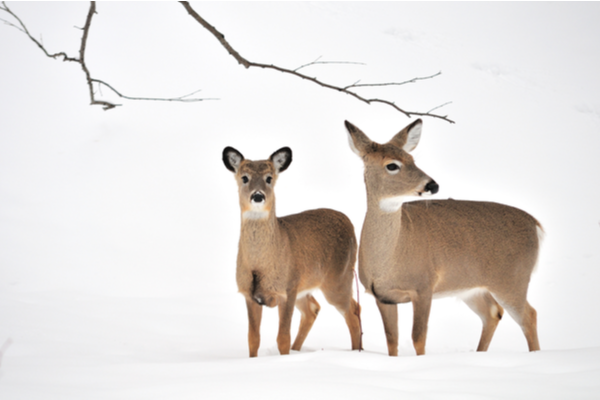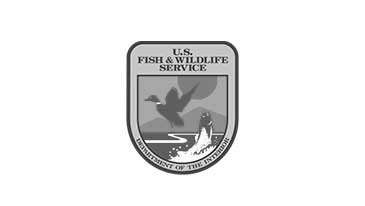Many animals slow down or hibernate during the winter. So, as temperatures drop, woods and prairies become quieter. However, you might be surprised by which animals are still out and about in the cold. Deer, squirrels, beavers, and skunks are just a few examples of wildlife that make the most of the snowy season.
The wildlife experts at Varment Guard have put together a list of wildlife you may spot around your home or out on the trail this winter. Keep reading to learn fun facts about these furry and feathered creatures and how they adapt to cold temperatures, snow, and ice.
What Happens to Wildlife in the Winter?
Bears hibernate. Spiders and insects go into diapause and don’t reemerge until spring. But what about the animals that thrive in winter? There are a lot of hearty critters that remain active all winter long. They prepare in the fall, store food for the months ahead, adjust their diets, change their behaviors and use special adaptations to make life during winter tolerable if not fully manageable.
Here’s a list of animals that stay out and about as the snow falls:
6 Animals That Thrive During Winter
1. Squirrels
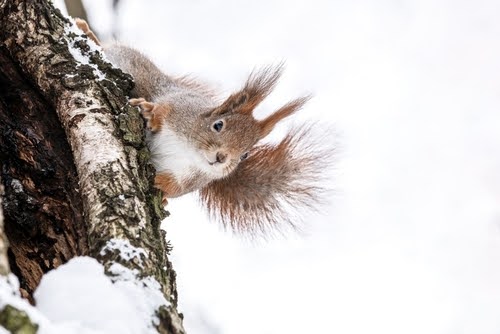
Squirrels are everywhere, no matter what time of year it is. They are hearty critters that have learned how to thrive during winter. In the fall, they fatten up and hide caches of food. You might glimpse a squirrel digging in your planter or garden bed. They’re hiding emergency food for the winter months.
2. Beavers
Beavers slow down in the winter and spend much of the season inside their dams. However, they remain active thanks to several adaptations:
- In the fall, beavers fatten up. They have a special storehouse: their tails. They can access this energy as needed when food sources are scarce.
- They also have a special oil-producing gland that piles their fur with waterproof coating that makes getting wet in winter more tolerable.
Beavers mate in January and February so that their young are ready to learn the building trade come spring.
3. White tail deer
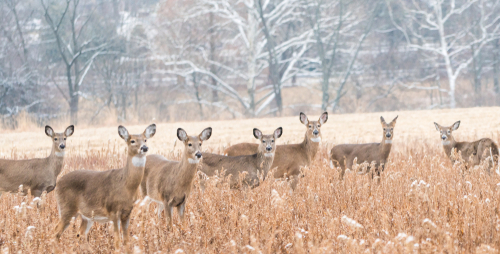
Deer become herd animals in winter. They gather in deer yards or areas with abundant food where they can collectively trample down the snow for safer movement. They eat leaves, twigs, nuts, and fruit as they can find it. They also grow a thicker winter coat called a guard coat that repels water and retains heat better than their summer coats.
4. Cottontail rabbits
Cottontail rabbits seek shelter in logs, abandoned holes, in garages, and under porches. They forage for ground level plants and switch their intake to twigs and bark for winter. They also have the miraculous ability to eat their own poop, which you’ve probably seen generously sprinkled across the winter blanket of snow.
It’s estimated that about 30% of rabbits survive winter. That may not seem like a lot, but consider that rabbits can have up to six litters in a year (each with 1-8 kittens).
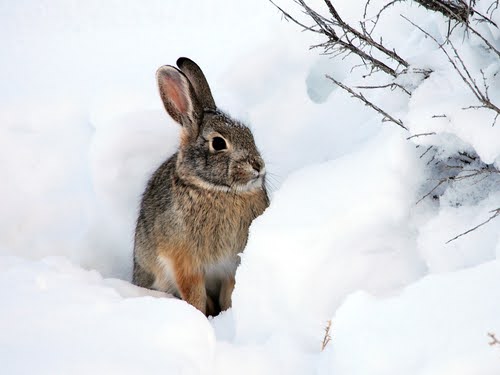
Just like wildlife, humans adapt in colder temperatures. In the winter, we trade lemonade for hot cocoa, tennis shoes for boots, and air conditioning for a crackling fire. As you cozy up this winter, remember that our local wildlife is adapting too. For more insights and to answer all your wildlife questions, Varment Guard is here to help.
5. Raccoons
Raccoons are highly adaptable animals, making them proficient at surviving the harsh conditions of winter. Here's how they manage:
- Winter Behavior: During the colder months, raccoons don't hibernate but enter a state of torpor, where they remain inactive for extended periods. This helps conserve energy.
- Food Storage: Unlike squirrels, raccoons don’t cache food. Instead, they fatten up in the fall to endure periods without food.
- Shelter: They find shelter in hollow trees, abandoned burrows, or even in urban structures like attics and chimneys to stay warm.
- Winter Diet: They're opportunistic feeders, scavenging for food wherever they can find it - from garbage bins to foraging in the woods.
Fun fact: Raccoons' dexterous front paws become less nimble in cold weather, making them more reliant on their sense of smell to locate food.
6. Skunks
Skunks, known for their distinctive smell, also have interesting ways to survive the winter:
- Winter Activity: Skunks don't truly hibernate but enter a state of dormancy. They may emerge during warmer spells to forage for food.
- Huddling for Warmth: In colder climates, skunks gather in communal dens for warmth, sometimes sharing space with other skunks.
- Fat Reserves: They build up fat reserves in the fall to sustain themselves when food is scarce.
- Dietary Adaptation: Skunks adapt their diet in winter, feeding on whatever is available, including insects, small mammals, and carrion.
Despite their reputation, skunks play a vital role in controlling insect and rodent populations, even during winter.

